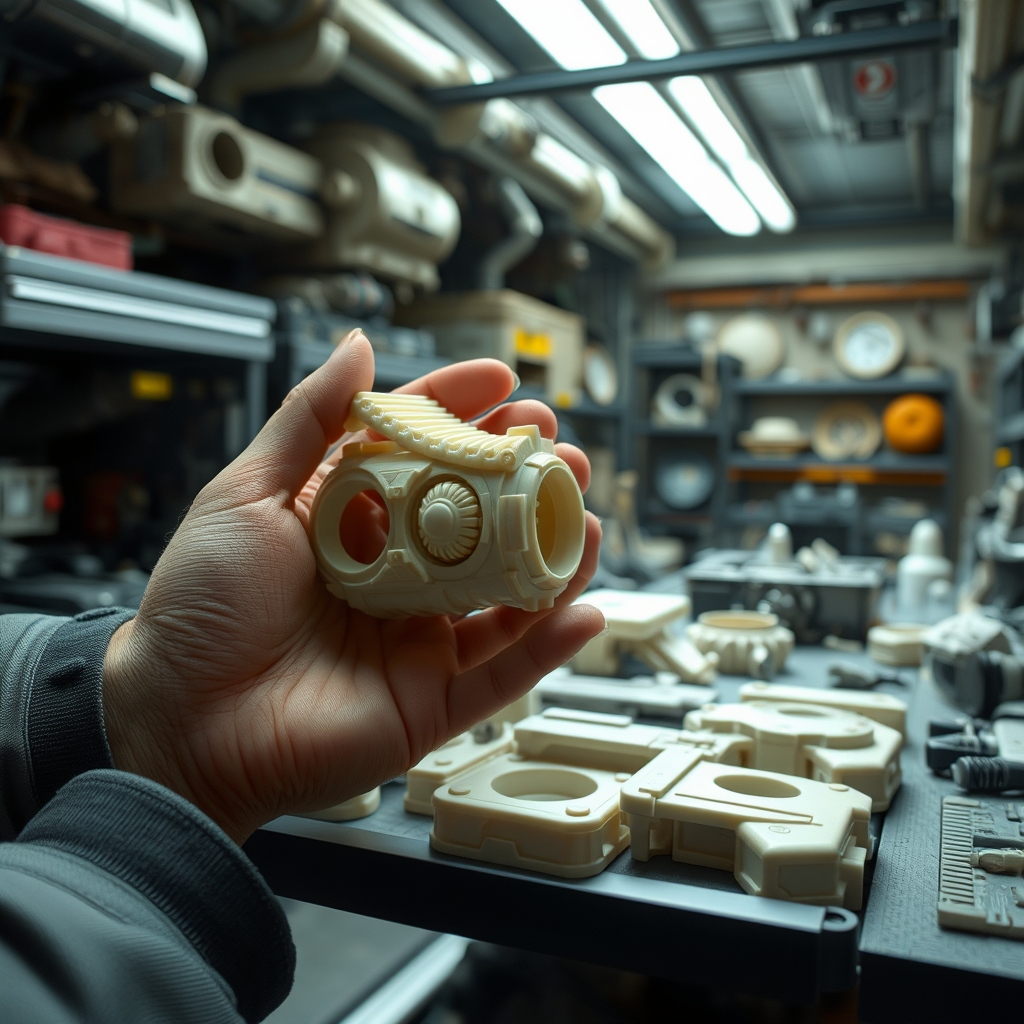
- +8615586668226
- [email protected]
- Nr 30, Hongbang Industrial Park, Shenzhen

CNC (Computer Numerical Control) engraving machines are like mini-milling machines, often used for detailed work. Think of them as robotic artists, precisely carving away material to create a specific shape. According to the PDF, these machines are commonly “represented by mini CNC machine-tools, in most cases gantry milling machines with movable load.” This means they’re robust and capable of handling various tasks.
3D printers, on the other hand, build parts layer by layer, like creating a sculpture by stacking tiny pieces. The PDF describes a typical 3D printer setup, noting, “This machine is built on a frame-based structure… The material is deposited on a plate.” This additive process opens doors to complex geometries that would be impossible with traditional methods.
Plastic offers a unique blend of properties, making it ideal for a wide range of applications. It’s lightweight, corrosion-resistant, and can be molded into intricate shapes. The PDF suggests that plastics are particularly useful for “repair works specific to certain machines and plants,” because they can be quickly manufactured to replace damaged parts.
Here’s a quick look at some common plastic characteristics:
| Nieruchomość | Korzyści |
|---|---|
| Lekki | Reduces overall weight, saves energy |
| Durable | Long-lasting, resistant to wear and tear |
| Versatile | Can be molded into various shapes and sizes |
| Opłacalność | Often cheaper than metals |
CNC machining shines when precision and tight tolerances are paramount. Consider it for parts requiring smooth surfaces, sharp edges, or specific material properties achievable through subtractive methods. The original document says “precision parts (guides, positioning elements, chain closing elements) shall be executed by cutting.”
For instance, creating accurate machine tool guides, which “are intended to materialize generating lines… required for generation of processed surfaces” as the text says, typically calls for CNC machining. This ensures the necessary accuracy and surface finish for smooth operation. Our team at CNC Manufacturing Service product manufacturing factory uses advanced CNC techniques to ensure exceptional results.
3D printing comes into its own when dealing with complex geometries, rapid prototyping, or low-volume production. It’s a fantastic way to quickly iterate designs and create intricate shapes without the need for expensive tooling. As the PDF notes, for “parts with a complex shape, that do not require a high accuracy (covers, ornaments, low-accuracy toothed gears, hand levers, bushings etc.), 3D printing shall be selected.”
Let’s look at a specific example of when 3D Printing is advantageous:
A multitude of industries benefit immensely from CNC machining and 3D printing. Here are just a few:
The original article includes “repair works specific to certain machines and plants” for “special spacers, machine-tools guides and toothed gears” which is beneficial across industries.
These two technologies aren’t mutually exclusive. They can complement each other. For instance, you could 3D print a near-net-shape part and then use CNC machining to achieve the final, precise dimensions and surface finish. Imagine combining the rapid prototyping of 3D printing with the precision of CNC for the best of both worlds!
Consider this scenario: a complex housing is 3D printed, then critical mating surfaces are CNC machined for a perfect fit. The PDF mentions this possibility directly: “In case of complex parts (bearing housings, small enclosures, high-precision gears etc.), the stock part may be executed by printing with a certain addition on surfaces intended to be processed more accurately, and then these additions shall be removed by cutting.”
A wide variety of plastics can be used in both CNC machining and 3D printing. Common choices include:
The choice of material depends on the application, required properties, and manufacturing method. Don’t forget to also consider exploring other Materiały used in CNC.
Plastic parts made with CNC machining and 3D printing are used in countless products and systems. Some examples include:
Our team at CNC Manufacturing Service product manufacturing factory provides solutions for industries across the spectrum, from Automatyzacja to New Energy.
While both CNC machining and 3D printing offer tremendous advantages, some challenges exist:
Understanding these challenges helps ensure you choose the right method and materials for your specific needs.
To begin, clearly define your requirements:
Once you have a solid understanding of your needs, contact us at CNC Manufacturing Service product manufacturing factory. Our experienced engineers can guide you through the process, helping you choose the best manufacturing method, select the right materials, and optimize your design for manufacturability. We can assist you with Szybkie prototypowanie too!
Here are some common questions about crafting plastic parts with CNC and 3D printing:
Is 3D printing always cheaper than CNC machining?
Not necessarily. For high-volume production, CNC machining can be more cost-effective due to faster cycle times.
What is the typical tolerance achievable with 3D printing?
It depends on the technology, but typical tolerances range from ±0.1mm to ±0.5mm.
Can I use recycled plastics for 3D printing?
Yes, some filaments are made from recycled plastics, promoting sustainability.
What post-processing is often required for 3D printed parts?
Support removal, sanding, painting, and coating are common post-processing steps.
Can CNC machining and 3D printing be used for large-scale production?
Yes, both methods can be scaled up for larger production runs, but the economics need to be carefully evaluated.
What file formats are generally required for CNC and 3D printing?
For CNC, commonly accepted file formats include STEP, IGES, and DXF. 3D printing usually requires STL or OBJ files.
Let CNC Manufacturing Service product manufacturing factory be your partner in bringing your ideas to life! Skontaktuj się z nami już dziś to discuss your project requirements.
Poznaj najnowsze trendy i fakty dotyczące produkcji CNC na naszym blogu.
Shenzhen Runkey Precision Technology Co. Ltd, spółka zależna Tensun Group, jest zaufanym, kompleksowym rozwiązaniem w zakresie niestandardowej produkcji, od prototypowania po produkcję. Przekształcenie pomysłu w rzeczywistość dzięki cyfrowym zasobom produkcyjnym, usprawnionym procesom, wskazówkom ekspertów, przyspieszonym terminom i bezkompromisowej jakości.
©2024. CNC Fabrication Wszelkie prawa zastrzeżone.